Guards Ribbon
The Guards Ribbon, Russian: (Гвардейская лента), is a military decoration awarded in the Soviet Union in 1942 for the elite soviet Guards unit, during the Great Patriotic War. The Guards Ribbon is also seen on various soviet war medals, and should not be confused with the Imperial Russian Army's military decoration, the Ribbon of Saint George.
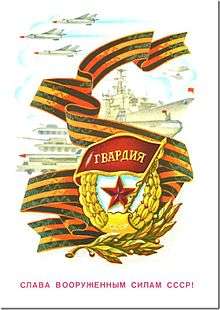
History
Sometime after the Bolshevik Revolution in 1917, the Soviet Government banned the Ribbon of Saint George and discouraged any usage of Russian imperial military awards after the revolution, based of the decree made by the Council of People's Commissars "On the Equalization of Rights of All Military Servicemen".[1] On 21 May 1942, the Presidium of the Supreme Soviet of the USSR introduced Guards ranks and Guards badges to be worn of the right side of the chest. Also included the banned Ribbon of Saint George pattern on medals and the Guards Red Banner Naval flag. In June 1943, they introduced the Guards Red Banners for the land forces and in February 1944 – for the naval forces. The patter of the Ribbon of Saint George adorned the banners exactly as in the 19th century, but the title remained de jure as the "Guards Ribbon", unlike the defunct George's ribbon. The Ribbon had barely any significance during the Soviet Union, but did serve it's usage on famous medals awarded to Red Army soldiers after the second world war, such as the Medal "For the Victory over Germany in the Great Patriotic War 1941–1945". And was also worn on top of Soviet Navy caps during the Second World War. The reintroduction of the Ribbon of Saint George under a different title was part of the revival of Russian patriotism under the Soviet Union during the war. It helped boost the morale of the Red Army, alongside propaganda posters that featured Bogatyrs and famous Imperial Russian generals, such as Mikhail Kutuzov. The revival of Russian patriotism and Tsarist symbolism contradicted the Soviet Union's internationalist ideology, but was only a temporary change in behavior due to the invasion by Nazi Germany.
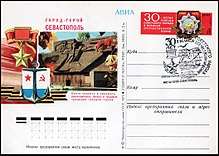
Medals and insignia
The pattern that was used for the Guards Ribbon was also used in various Soviet medals with different colors.
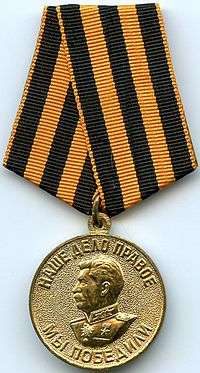
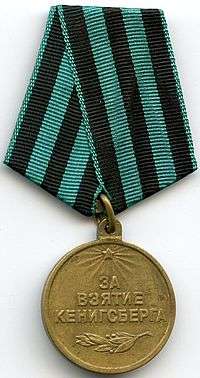

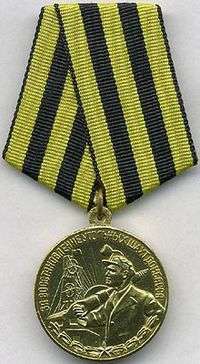
 Guards Sign for Soviet Navy
Guards Sign for Soviet Navy
On flags
 1942 Guards Red Banner Naval Flag
1942 Guards Red Banner Naval Flag 1942-1950 Guards Naval Flag
1942-1950 Guards Naval Flag- 1942-1950 Guards Naval Flag
References
- ↑ The Constitution of Russia website: http://constitution.garant.ru/history/act1600-1918/5316/ (archived version: https://web.archive.org/web/20141010183043/http://constitution.garant.ru:80/history/act1600-1918/5316/)